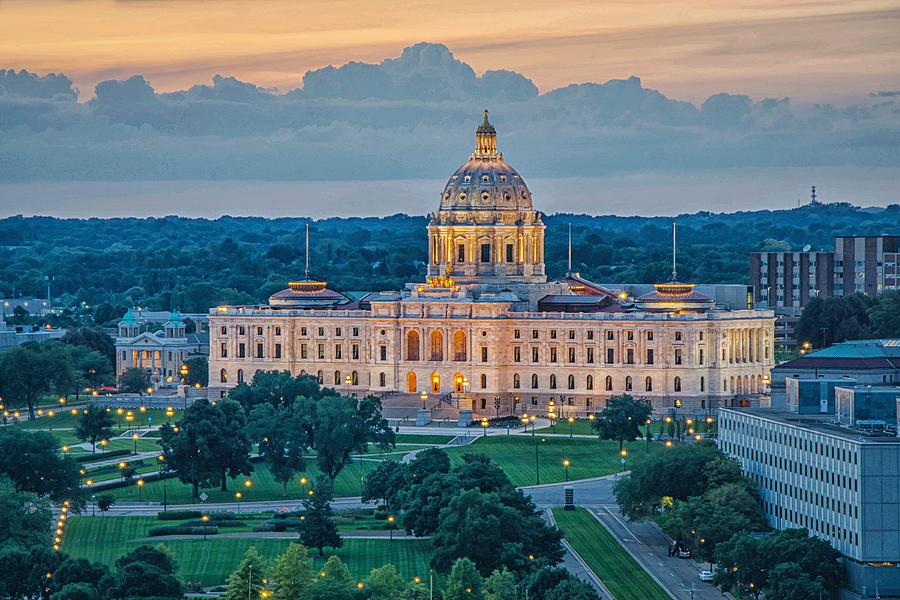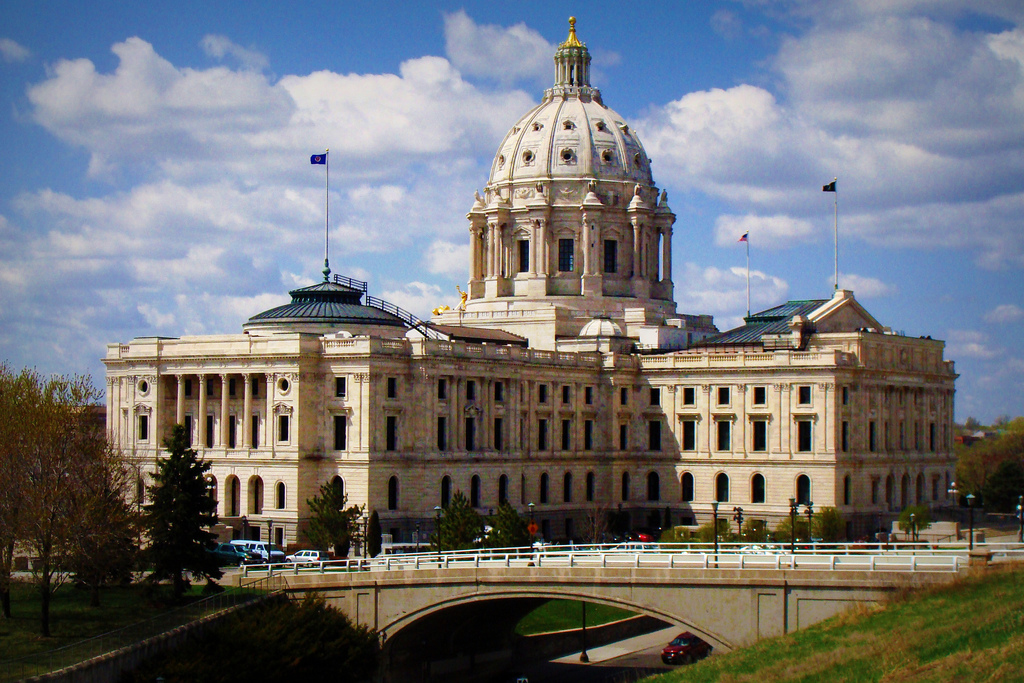Is it truly possible for a city to embody the spirit of a state, acting as both its administrative heart and a vibrant tapestry of culture and history? Saint Paul, Minnesota, stands as a resounding testament to this, serving as the state's capital and a city brimming with its own unique identity.
Saint Paul, often abbreviated as St. Paul, isn't just a point on a map; it's a vibrant entity, a city with a captivating story. This captivating narrative unfolds on the eastern bank of the Mississippi River, a city rich with historical significance, a lively contemporary character, and a compelling destiny. Its designation as the capital of Minnesota is a testament to its crucial role in shaping the state's narrative.
Saint Pauls story begins in 1849 when the Minnesota Territory was formalized, with Saint Paul being chosen as the capital city after much debate. The first Capitol building, a reflection of the city's nascent aspirations, rose in 1853, serving as the seat of the territorial government, and then the early state government. However, its tenure was brought to an end by a devastating fire in 1881. The city's selection as the capital solidified when Minnesota was granted statehood in 1858.
- Selena Gomezs Family Exploring Her Sisters Potential Motherhood
- How To Contact Ebay Customer Service Tips Support
Along with Minneapolis, Saint Paul forms the core of the Twin Cities region, the third largest metropolitan area in the Midwest. While Minneapolis often steals the spotlight as the state's largest city, Saint Paul retains its place as the second most populous city, holding the reins of the state's governance and its county seat, Ramsey County.
As you explore Saint Paul, you'll encounter the Minnesota State Capitol, a monument that houses the state's Senate, House of Representatives, the Attorney General's office, and the Governor's office. It is more than just a building; it is the very pulse of Minnesota's democratic processes, situated in the heart of its capital city.
A city steeped in history, Saint Paul boasts a rich cultural heritage, with iconic landmarks that whisper tales of the past. From its founding, Saint Pauls narrative intertwines with the Mississippi River. The presence of the Dakota (Sioux) people in the area before the arrival of European settlers is a critical factor that must be acknowledged in order to comprehend the totality of the city's rich past.
- Sara Gilbert Linda Perry Divorce Updates Relationship Timeline
- Tyria Moore Today What Happened To Aileen Wuornos Partner
Saint Paul's story is one of resilience, growth, and an unwavering commitment to its unique identity. From its beginnings as a territorial settlement to its current status as a thriving metropolis, Saint Paul has consistently proven its ability to not just survive but to flourish.
The very essence of Saint Paul is defined by its position on the Mississippi River, the lifeblood of its geographical context. The city's layout, and its relationship with the river, have both shaped its history and continue to influence its present.
In 1805, Zebulon Pike negotiated an unofficial treaty with the Dakota (Sioux) for ownership of the region, which set the stage for Saint Paul's growth and subsequent evolution. From that crucial historical moment, the city began its trajectory toward its present eminence as Minnesota's capital.
The capital, built in 1854, continues to represent the state's values and heritage. The 1857 decision to transfer the capital to Saint Peter was contested. However, Joe Rolette, a territorial legislator, had a significant impact on Saint Paul's destiny. He stole the bill, went into hiding, and in doing so ensured that the city would stay the state's official capital. It's a tale that encapsulates the determined character of Saint Paul itself.
The capital city's population was 311,527 as of the 2020 census, making it the state's second largest city. Additionally, St. Paul is the seat of Ramsey County. The metropolitan area, which includes the nearby Minneapolis, is home to more than 3.3 million people, making it one of the largest metropolitan areas in the United States.
Minneapolis, located to the west of Saint Paul, is another major city in Minnesota, yet it is Saint Paul that serves as the official capital. The two cities, often referred to as the "Twin Cities," are tightly woven together, both geographically and culturally, forming a vibrant urban region.
The capital city is known as "Pig's Eye" and "Capital City". In the historical context, these nicknames convey insights into the city's evolution and the various phases of its identity. These nicknames are a reflection of its development and unique personality throughout the years.
The state's official capital, Saint Paul, is the second-largest city in Minnesota. It serves as both the seat of Ramsey County and a vital center of government and culture. The city's role as the state capital has played a vital role in its history since 1849.
Saint Paul, the Capital of Minnesota: Quick Facts
| Attribute | Details |
|---|---|
| Official Name | Saint Paul |
| State | Minnesota |
| County Seat | Ramsey County |
| Established | 1849 (Territory) / 1858 (Capital) |
| Nickname(s) | Capital City, Pig's Eye |
| Population (2020 Census) | 311,527 |
| Location | Eastern bank of the Mississippi River |
| Key Features | Minnesota State Capitol, Historic Landmarks, Twin Cities Region |
| Economy | Diverse, with sectors including healthcare, finance, and education |
| Major Cities Nearby | Minneapolis |
The city's economy is as diverse as its cultural landscape, powered by a number of key sectors. From healthcare and finance to education and manufacturing, Saint Paul's economic foundation is one of strength and variety. The city's prosperity is evidence of its long-term resilience. The city's strategic location, access to transportation, and skilled workforce all contribute to its continuous economic expansion.
Saint Paul's educational landscape is similarly varied, providing a wide range of possibilities for individuals of various ages and interests. The city's educational institutions, including colleges and universities, play a crucial role in fostering innovation, research, and intellectual growth. Schools and universities play a vital role in shaping the city's future by encouraging intellectual inquiry and providing access to knowledge.
The city's architecture tells of an incredible mix of historical and contemporary styles, mirroring its evolution and the different influences that have molded its cultural and architectural landscape. The city's historical landmarks, coupled with contemporary architecture, offer a visible narrative of its long journey. These buildings and structures give a tangible reminder of the past while also symbolizing the city's progressive progress.
The city also provides a lively arts and culture scene. This provides the residents and guests with a wide variety of events, festivals, and artistic expressions. From theaters and galleries to musical venues and public art projects, Saint Paul's cultural environment is a reflection of its varied population. The arts act as a catalyst for social change and community engagement, and they have a fundamental influence in the city.
The city's location next to Minneapolis has a major influence on its culture and character. Together, the Twin Cities, represent a united metropolitan area, offering citizens access to numerous opportunities, resources, and cultural attractions. Despite their distinct identities, Saint Paul and Minneapolis complement each other. This cooperation improves both of the cities appeal.
Saint Paul's position as the capital of Minnesota is firmly secured by its rich history, diversified culture, and robust economy. It is a city of contrasts, where the echoes of the past coexist harmoniously with the promise of the future. It is the essence of a state, a place where history and progress collide. Saint Paul continues to evolve and grow with a clear sense of its own identity.
Saint Paul is a city of many stories, each thread woven into a rich fabric of Minnesota's history. From its selection as the capital to its thriving contemporary scene, the city is a monument to perseverance, culture, and a desire to create a future as bright and colorful as its history. The city is a living testament to Minnesota's soul, with a vibrant spirit and a significant destiny.
In essence, Saint Paul is far more than just Minnesota's capital; it's a thriving city with a distinct history, a lively present, and a future full of promise. It is a symbol of Minnesota's soul, embodying the ideals of resilience, culture, and the enduring spirit of progress.



Detail Author:
- Name : Lera Rosenbaum
- Username : nikolaus.judson
- Email : clinton26@gislason.biz
- Birthdate : 1979-01-07
- Address : 2120 Wehner Overpass Suite 282 Lake Dallinmouth, MD 63019-1676
- Phone : +1-928-419-8710
- Company : Boehm and Sons
- Job : Computer Specialist
- Bio : Quisquam iste sed accusamus veritatis harum voluptatem voluptatem. Alias quisquam et placeat magnam. Voluptates velit magnam et omnis. Dolorem iure id earum nesciunt ab voluptas.
Socials
linkedin:
- url : https://linkedin.com/in/rosenbaum1977
- username : rosenbaum1977
- bio : Earum est sed aut quia.
- followers : 4260
- following : 1182
facebook:
- url : https://facebook.com/rosenbaumk
- username : rosenbaumk
- bio : Totam repellat libero quas.
- followers : 2168
- following : 816